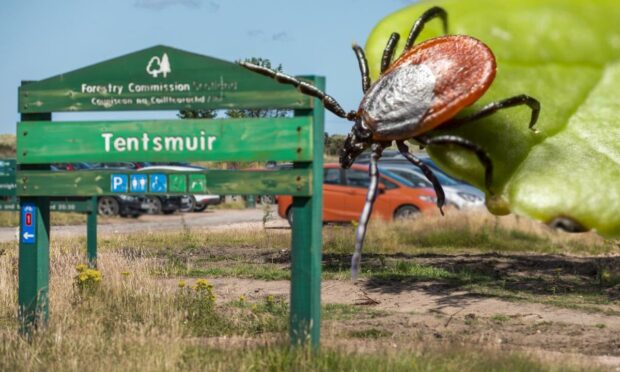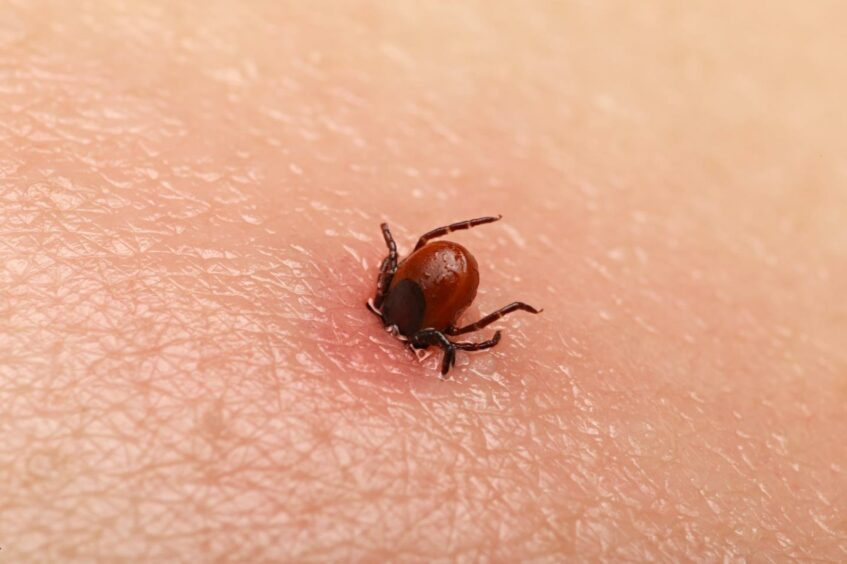When it’s still a bit chilly outside, we don’t need to worry about ticks, right? Alas no, according to the experts.
Tick bites are reported all year round in Scotland. Yes, all year round.
The ones here in Scotland are scientifically proven to have a higher tolerance to the cold compared to their more southern counterparts.
And our milder winters are making life even easier for them.
We asked Dr Lucy Gilbert at Glasgow University why these blood sucking bugs just won’t die.
“They are extremely resilient to freezing temperatures. They live in the Norwegian Arctic even, so Scotland is easy for them.”
Dr Gilbert is a senior research fellow at Glasgow University. She is an expert in ticks and the diseases they carry.
And she says even a harsh winter by Scottish standards is nothing for these hardened parasites.
“What we call a mild winter will be unlikely to have a massive beneficial effect. What we call a very cold winter is still mild by Scandinavian terms, where they also thrive.”
Scottish ticks are more hard core – fact
Terrifyingly, Scottish ticks have adapted a resistance to our rubbish weather.
Dr Gilbert found that compared with ticks from more southern latitudes, ours are active at temperatures as low as 6C.
She “collected a load of ticks” from north east Scotland, Wales, southern England and France to see how they behaved under different temperatures.
Although she “fully expected all ticks to be fully asleep” at 6C, nearly a fifth of the Scottish ticks were active.
“At 10C, 80% of Scottish ticks were active compared to only 45% of French ticks.”
NHS Highland, which hosts the country’s tick-borne infections laboratory, confirmed that tick bites are being reported all year round.
However, they are generally more active between March and October so lovers of the great outdoors should be particularly vigilant during the warmer months.
Dr Gilbert adds: “Yes we can see ticks even in mid-winter, but there are far, far fewer in mid-winter than in spring and summer.
“It is more likely they are active in winter during a mild spell – and probably more active in winter on the warmer west side of Scotland than in, for example, the Cairngorms.
“As our winters get milder and warmer, we expect to see a few more ticks active in winter.”
So how can we avoid the little blighters?
Well, we can’t.
They are pretty much everywhere – from woodlands and long grass to parks and gardens.
But we can be aware of when they’re likely to be more active – read ‘bitey’ – and take precautions.
“A ‘bad year’ for ticks generally means that ticks happen to be active,” says Dr Gilbert.
“For example due to warm, humid weather when people are out and about.”
“So, in the short term, look at the weather forecast.”
On a hot and humid day, you’ll hardly want to cover yourself up with layers of clothes.
But if you’re walking in an area which is overgrown, bare skin will provide a tempting snack for ticks lingering on plants like ferns.
NHS Scotland advises covering up as much as possible and using an insect repellent.
I’ve been bitten, what next?
If you’ve ever been bitten by a tick, you probably didn’t feel anything.
Bites are usually painless and the spider-like pests can burrow into your skin without you knowing.
After being outside, you should always give yourself a good check over. And look everywhere – they can even get into your hair and between your toes.
If you find one, a pair of fine-tipped tweezers is an ideal implement to remove it with.
Grab it as near to the skin as possible without squashing it – you don’t want any infected stomach contents getting into your bloodstream (nice, I know) – and gently pull it straight upwards.
Only a small proportion of ticks carry Lyme disease. However, in the days and weeks after being bitten, you should see your GP if you develop flu-like symptoms or the tell-tale circular ‘bullseye’ rash.











